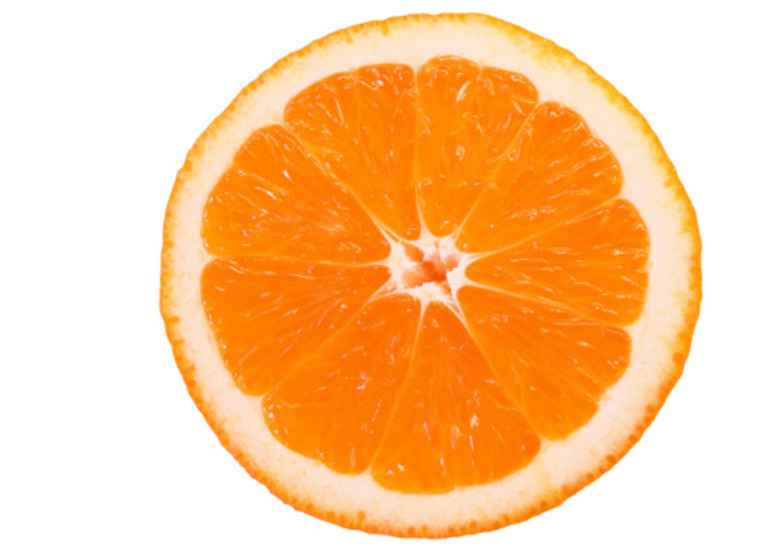How To Make An Ascorbic Acid Solution
Chemists refer to solutions as single-phase mixtures of two or more pure compounds. Although solutions can form between compounds in any phase — solid, liquid or gas — this most often refers to a mixture of two liquids or a solid dissolved in a liquid. Dissolving a solid requires a liquid solvent in which the solid exhibits good solubility. Ascorbic acid, also known as vitamin C, exhibits a solubility in water of 1.735 moles per liter, or about 306 grams per liter, classifying it as highly soluble in water. Unfortunately, the most readily available source of ascorbic acid — store-bought vitamin C pills — contain some components other than ascorbic acid, such as binders, that do not easily dissolve. Consequently, an additional step to remove the insoluble components by filtration is necessary when preparing an ascorbic acid solution.
Step 1
Crush a vitamin C tablet into a fine powder using a mortar and pestle, then transfer the powder to a sauce pan. Each 500-mg tablet will add 250 parts per million, or ppm, of ascorbic acid to the final solution. Another way chemists express ppm is "milligrams per liter." Because the final solution will exhibit a volume of 2 liters, each tablet will contribute 500 mg / 2 L = 250 ppm. Crush and add additional tablets if you desire a concentration greater than 250 ppm.
Step 2
Fill the sauce pan with about 8 ounces of water, then heat the contents on a stove or hot plate. Periodically stir the mixture with a spoon or glass stirring rod. When bubbles form on the bottom of the pan or beaker, remove it from the heat and allow it to cool until only warm to the touch.
Step 3
Place a coffee filter in a plastic funnel and insert the funnel into a thoroughly rinsed two-liter bottle. Pour the warm solution through the filter paper into the two-liter bottle. Next, add a few ounces of cold water to the pan, swirl it, and also pour this solution through the filter paper into the bottle.
Step 4
Remove the funnel from the bottle and add enough water to fill the two-liter bottle nearly full. If you have a full, unopened two-liter bottle of soda nearby, try to fill the bottle containing the ascorbic acid to the same level as the unopened bottle so that the volume of the ascorbic acid bottle is almost exactly 2 liters.
Step 5
Tightly cap the bottle containing the ascorbic acid bottle and invert it several times to mix the contents. Label the bottle "ascorbic acid" along with the concentration. Keep in mind that each 500-mg vitamin C tablet adds 250 ppm of ascorbic acid. Thus, if you dissolved three tablets, write "750 ppm" on the label.
Things Needed
- 500 mg Vitamin C tablets
- Mortar and pestle
- Sauce pan or large beaker
- Spoon or stirring rod
- Plastic funnel
- Coffee filter
- Empty two-liter bottle with cap
- Adhesive label
Cite This Article
MLA
Brubaker, Jack. "How To Make An Ascorbic Acid Solution" sciencing.com, https://www.sciencing.com/make-ascorbic-acid-solution-8112190/. 24 April 2017.
APA
Brubaker, Jack. (2017, April 24). How To Make An Ascorbic Acid Solution. sciencing.com. Retrieved from https://www.sciencing.com/make-ascorbic-acid-solution-8112190/
Chicago
Brubaker, Jack. How To Make An Ascorbic Acid Solution last modified August 30, 2022. https://www.sciencing.com/make-ascorbic-acid-solution-8112190/
